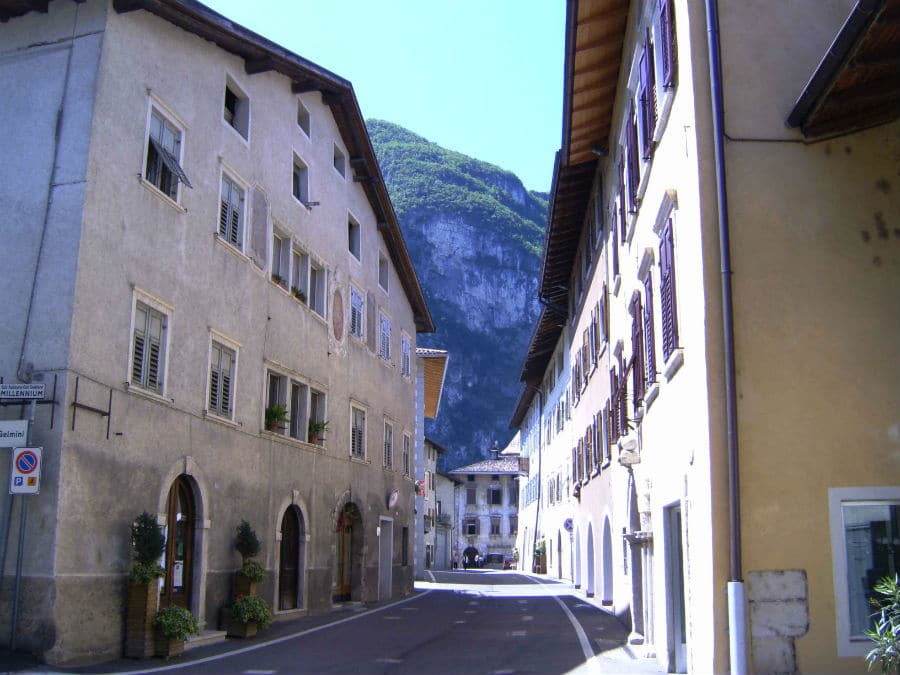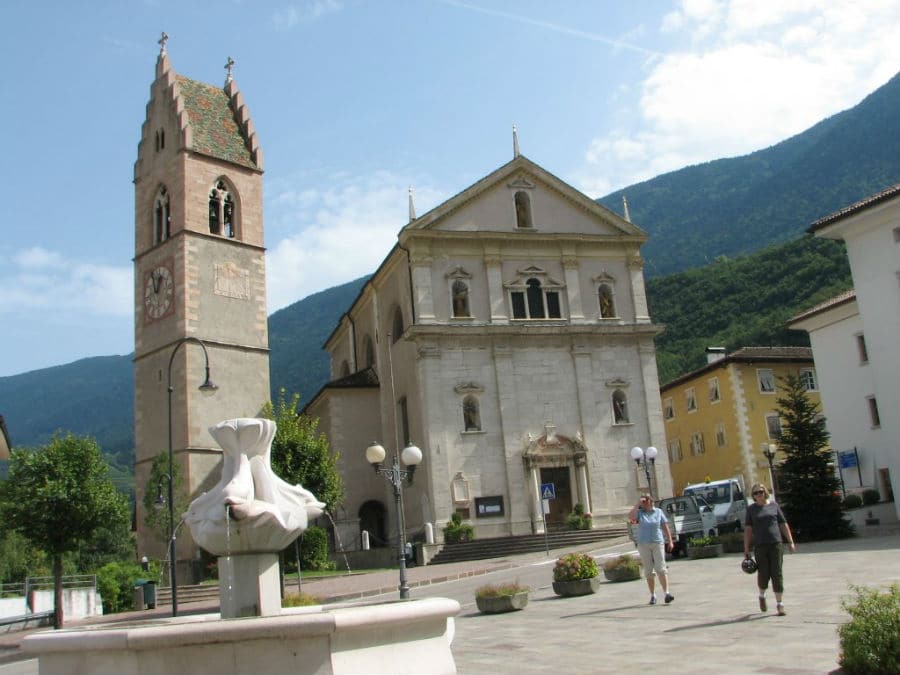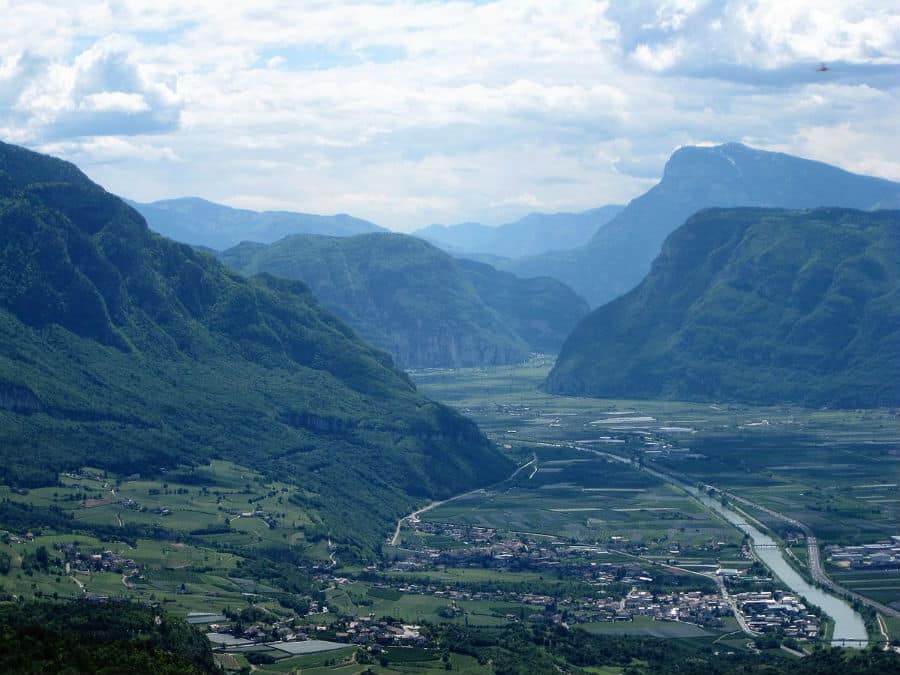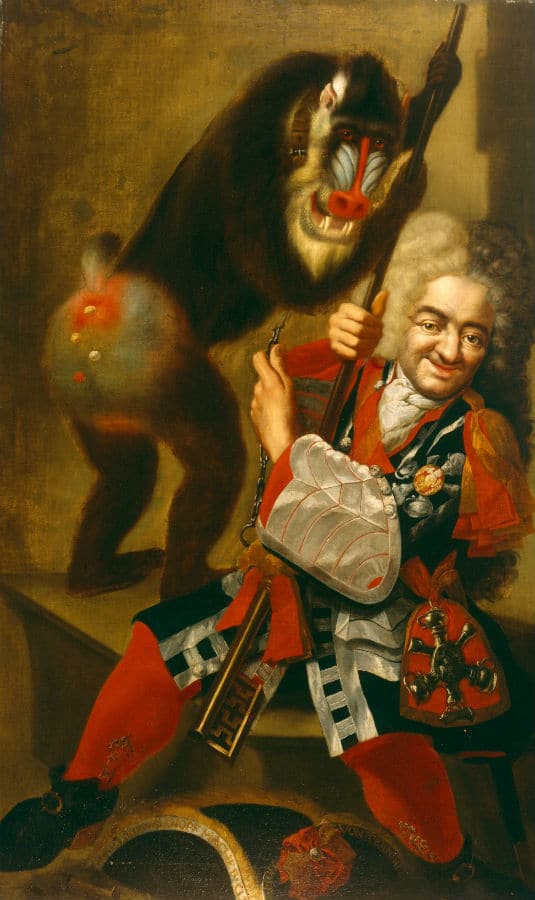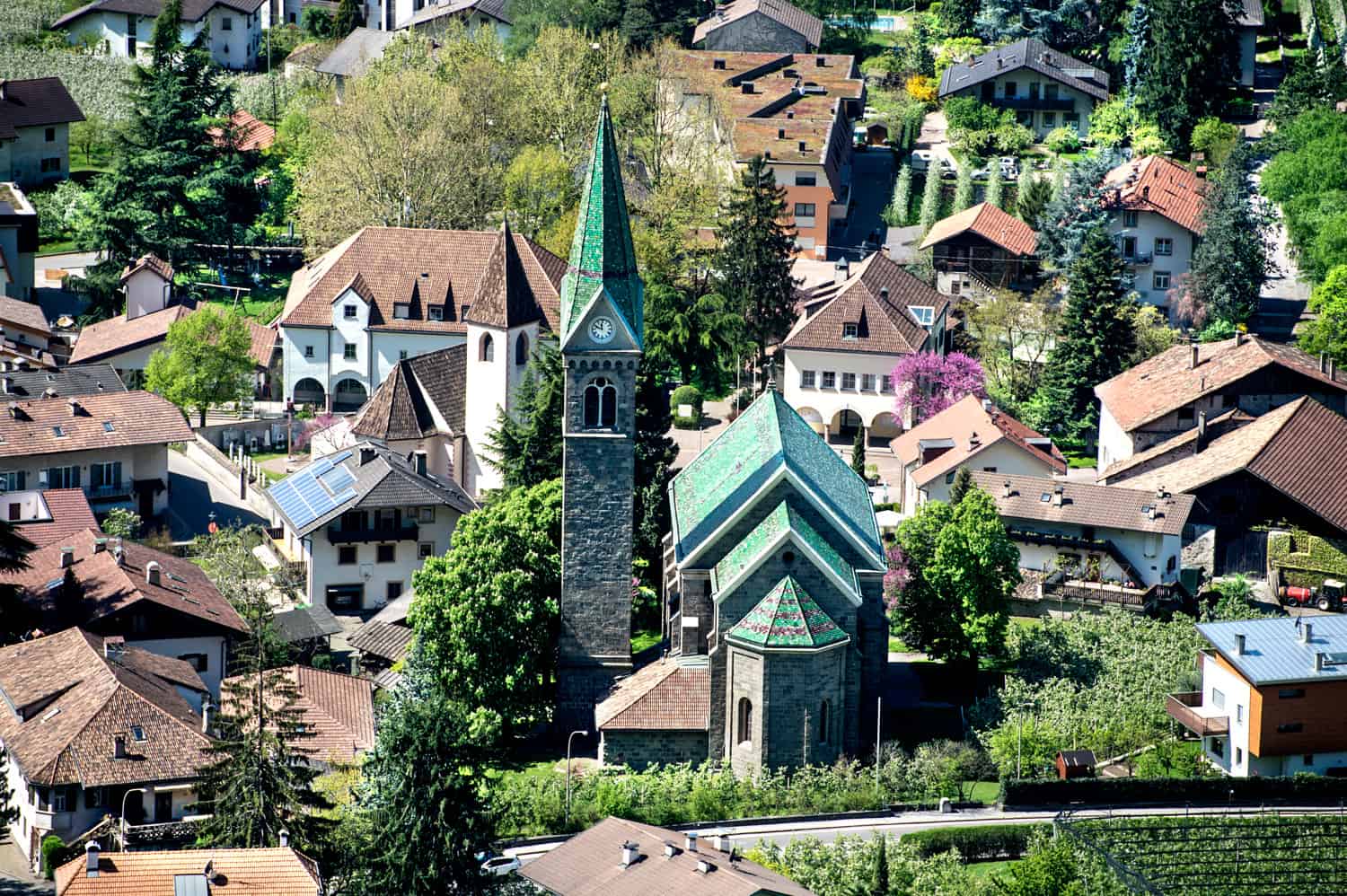Near Salorno (Salurn in German, Salórn in Trentino dialect) the Adige Valley narrows, forming the closed Salorno (Salurner Klause). In the last two centuries the closed has constituted a symbolic barrier between the German-speaking part and italofona (now Trentino) of historical Tyrol and is traditionally considered the language border between the area of Germanic language and that of the Italian language in Val d'Adige. Today the majority of salornesi is in italian language. A good part of its territory is part of the Natural Park Monte Corno. Another area is the biotope Paludèl.
The toponym is attested as Salurnis in the second half of the VIII century, as Salurne in 1184-1186 and Salurn as in 1288. Probably derives from a theme preromano hall with the meaning of swamp. Since the thirteenth century the Counts of Tyrol obtained control of the village. Is the 1403 the important Weistum (Statute of rule) that defines the rights of the Community toward the Hapsburg power, completely written in German language. Until the First World War Salorno was once part of the Austro-Hungarian Empire, following the Italian victory sanctioned by the Treaty of Saint-Germain-en-Laye was annexd to the Reign of Italy.
During the Fascist period the town of Salorno was aggregated to the province of Trento, together with the entire Unterland to facilitate italianizzazione. The use of the german in public and his teaching were banned but the minority of German language is organized by establishing clandestine classes in which you taught the german language (the so-called Katakombenschulen): The salornese Josef Noldin was one of the main organizers and it was for this deported by the fascist government on the island of Lipari. In 1948 Salorno passed to the province of Bolzano as established by the first statute of autonomy of the Trentino-Alto Adige and in view also of the intention expressed by the German-speaking population of Unterland.
Certainly deserves a visit the Castello di Salorno, situated to the south of the village. Some typical dishes of the local cuisine are the strudel, canederli, sauerkraut, sausages, the strauben and Speck.


